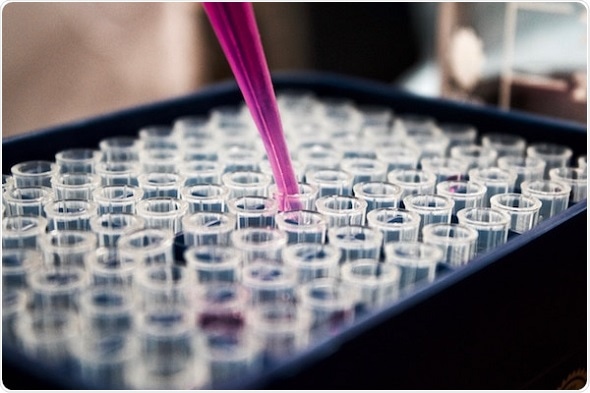DNA or genetic testing is a medical test that identifies changes in chromosomes, genes, or proteins to determine a genetic condition or eliminate the chance of the formation or passing on of a gene-based disorder amongst humans and animals.

New ‘Vilnius-Made’ method reduces DNA testing costs by 90%, while the city’s long-standing tradition of life sciences further position Lithuanian Capital as emerging European hub of international scientific development
At present, the sole method of genetic testing is the DNA curtain method, which captures images of the interactions between proteins and DNA at a single molecular level. The approach, however, has been described as “technically challenging and relatively unstable” due to the relationship between chromium barriers and fluid lipid bilayer membranes.
To overcome the challenges presented by existing DNA testing methods, scientists from the Vilnius University Life Sciences Centre (VU LSC) and the Center for Physical Sciences and Technology (CPST) have jointly-developed an alternative approach. The Fixed DNA Molecule Array method is a solution that makes DNA testing more cost-effective and simpler.
The solution developed in Vilnius, the capital of Lithuania, reduces costs and time due to its use of a blueprint that can be used repeatedly as opposed to just once. It is estimated by VU LSC and the CPST that this approach can reduce the cost of one DNA testing experiment by 90%.
The research was carried out by seven scientists from VU LSC and the CPST at the newly-opened Saulėtekis science and technology park in Vilnius. It took 2.5 years to develop and received EUR 100,000 in funding from Lithuania’s national research council.
One of the leaders of the Fixed DNA Molecule Arrays project, Dr. Mindaugas Zaremba, believes that the alternative to the DNA curtain will not be the last ‘Vilnius-made’ solution to contribute to the advancement of international science. The project brought together biochemists exploring DNA-interacting proteins from VU LSC, and CPST’s physicists who used Lithuanian-developed laser technologies to explore the molecules.
“This latest achievement shows the strong spirit of collaboration between the sciences in Vilnius," he commented. "Without biochemistry, we would not have been able to obtain the correct proteins for the research. Without the lasers, we would not have been able to observe these molecules and their behavior. If we continue to work closely together and work on the development of our talented scientific community, I do not see why Lithuania, especially Vilnius, cannot become a hub of European scientific breakthroughs and international export of the future."
The city’s long-standing tradition of academic pursuits in the fields of science and technology put Lithuania in first place across the European Union for its share of graduates per-capita. In total, 11% of all university students are enrolled on study programmes related to life sciences.
Applications to study life sciences at Vilnius University are currently at an all-time high. This is a testament to Vilnius being a city that fosters its scientific talents. Our scientists working together to overcome challenges such as those posed by the DNA curtain are proof of this. These achievements, combined with the record number of students wishing to study life sciences at VU, firmly put Lithuania on the map in terms of making decisions that contribute to the international scientific developments.”
Remigijus Šimašius, Vilnius Mayor
The life sciences sector in Lithuania has an annual growth rate of 19%, which is the fastest in the EU. It appears that Vilnius will not lose its reputation as a city in which life sciences will continue to thrive. This comes on the back of the news that applications to study biochemistry and molecular biology courses at Vilnius University (VU) have broken new records, with the institution having to introduce new admission requirements to cope with the influx of applicants.